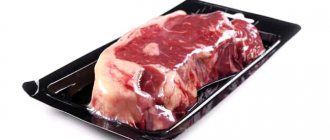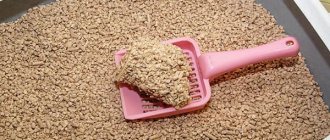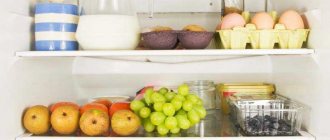- Livestock
Almost all beekeepers answer negatively when asked whether honey can be heated. This way, all its beneficial properties are lost, it turns into a toxic substance and can be harmful to health. But if you add a small amount of bee product to tea or milk, nothing bad will happen.
Refutation?
Some sources claim that the dangers of heated honey are a myth. This myth is based on the fact that when heated, hydroxymethylfurfural or OMF is released. In honey, the source of OMP is fructose. When heated, it disintegrates and a certain amount of OMP is released. It is important to note that OMP is present in all sweet products that were heated during the manufacturing process: candies, jam, biscuits, coffee, sweet soda water and much more. At the same time, GOST determines the maximum content of OMP in honey - no more than 25 mg/kg, and the content of OMP, for example, in soda can reach 300-350 mg/l, and in roasted coffee up to 2000 mg/kg. But even in such concentrations, OMF is absolutely safe for humans. Speaking about honey, we can responsibly state that even if you boil it, you will not be able to reach such a concentration of OMP that it becomes dangerous to the body.
Thus, it is concluded that when honey is heated and even boiled, it remains absolutely safe for the body, although it loses its beneficial properties. After all, the main benefits of honey are glucose and fructose, which break down at temperatures above 40 degrees Celsius. In order for honey to remain just as healthy, it either does not need to be heated at all, or gradually heated to 40 degrees over low heat and preferably in a water bath.
If you like tea or coffee with honey, eat it as a bite, so you will not only enjoy the taste, but also get a boost of health and vigor. When it comes to cooking hot dishes with honey, feel free to heat the honey if the recipe calls for it. The beneficial properties of honey will not be preserved, but this will not affect the taste.
Myth: Honey is good for diabetes and is suitable for diet.
Not really.
On the one hand, honey can indeed minimize several risk factors for heart disease that are common in people with type 2 diabetes (for example, lowering “bad” cholesterol and triglyceride levels while increasing “good”), but on the other hand, honey absolutely increases blood sugar level. And it has far from zero calories.
Truth: Honey is high in fructose and calories.
It is important for people suffering from diabetes to know that honey has a high glycemic index - from 30 to 70 units. In most cases, this is no less than that of sugar (60–65). Those who adhere to diets need to remember that honey is a high-calorie product: 310 kcal versus 387 in sugar - not too much of a difference if you monitor your KBZHU indicators.
Conclusion
Diabetics should treat honey with caution, as with other sugar-containing products. Proponents of diets should take into account that honey has a high calorie content.
How long can honey be heated without harming its quality?
- To prepare for packaging, honey is usually dissolved in a water bath, where it is heated from 45 to 50⁰C. Such heating for two days does not lead to a significant increase in the amount of hydroxymethylfurfural, and the values of this substance remain within the normal limits of the standard.
- When honey is heated to 80⁰C for 2 minutes and then rapidly cooled, hydroxymethylfurfural also does not have time to form in a more or less significant amount, the honey remains almost the same quality as before heating.
- Thus, the amount of hydroxymethylfurfural in honey is directly proportional to the time and intensity of its heating.
- With prolonged heating above 50⁰C, some vitamins and enzymes of honey are destroyed, which changes its biological properties.
What is the maximum temperature for heating honey?
It should be noted that hydroxymethylfurfural, in much larger quantities than in overheated honey, is found in all products that contain sugar and the preparation of which requires heating to high temperatures.
The melting point of bee honey is 70–80 °C. You can’t boil it or bring it to a boil, and it doesn’t make sense. It has been proven that heating to +50 °C changes little in honey, but after +60 °C the changes are more significant.
Exceeding the AMF norm can be determined by the appearance of a specific taste reminiscent of caramel. Although the direct danger of this compound has not yet been proven by anyone.
How to reheat correctly?
When heating honey, the process must be followed correctly. Let's look at the most popular methods.
Microwave
Many people resort to using a microwave oven, as it is very quick and easy. But in this case, you simply say goodbye to all the healing qualities of the product. Attention! Remember, the thermometer mark +40°C is critical. You can't cross it. A microwave causes irreparable harm to the composition of honey. Why can’t you heat honey in a microwave? This device is capable of heating food at fairly high power. Even if you turn it on for a few seconds, the heating intensity will still be too strong and the healing nectar will instantly lose all its properties.
- Cat meowing
- Alexandrian parrot
- Why does a cat need a mustache?
- Rescue dogs
- Hypoallergenic cats
- Why does a cat need a tail?
Water bath
Optimal heating conditions can only be created using a water bath. The process itself is quite simple and does not require any special equipment. There is no doubt that it will take a little more time than when using a stove, but you will retain absolutely all the beneficial properties of honey without losing its nutritional value. What is a water bath? In fact, everything is very simple. It is necessary to pour a small amount of water into a wide container so that the immersed vessel with honey is covered by about a third with liquid. Gauze or a piece of fabric is placed at the bottom of this dish. Important! The container with water and the container with honey should not come into contact. Heat-resistant containers must be used as external containers. When the water boils, the gas supply intensity is reduced to the minimum level to ensure slow, uniform heating of the honey. It is advisable to use a culinary thermometer, which will not allow you to exceed the critical level.
From the above we can conclude that a microwave oven is not suitable for heating honey, and a water bath is the most acceptable option. Remember that you must act carefully and carefully. If it is not possible to regulate the temperature of the product, then it is better to leave this idea and not heat the sweetness unless absolutely necessary. In fact, crystallized honey is no different from fresh nectar that has just been extracted from the hive. It still contains all the vitamins, minerals, enzymes and has a fairly strong healing effect. If you do not have a specific goal, then it is better to refrain from unnecessarily raising the temperature of the honey, and it will bring you exceptional benefits.
Is it possible to freeze
Freezing, like boiling, will not bring anything good to the product. And even refrigeration will destroy valuable compounds in the product.
How long does honey last? The optimal temperature range for honey is from 21 to 30 degrees Celsius, so a dark kitchen cabinet is quite suitable. The sweetness will remain there for a long time without crystallizing, from a year to two. Miss Clean magazine recommends keeping the main supply in a large airtight container, and a small “current” volume in a small glass jar with a lid (for example, from tomato paste) - this will extend the shelf life.
Using heated honey for various purposes
In some situations, a heated product is needed; it is used as a food additive, added to cosmetics for the face and hair. Many pharmacological preparations use heated honey. Masks and creams with heated bee product are easier to apply. Candied nectar is poorly soluble, the particles are hard and negatively affect the condition of the skin and hair. Also, this type of honey is poured into different vessels. Heating honey is allowed, but not at too high temperatures. If it exceeds 40 degrees, there will be syrup with sugar, without enzymes, glucose, fructose. The product begins to lose its color, become dark, and sometimes may be brownish. The bactericidal effect and energy elements are lost. This can happen when a person prepares a cold medicine with milk and adds a bee product, such a drink is useless.
We distinguish a quality product from fakes
Such an expensive product as fresh honey is often counterfeited: mixed with crystallized honey and heated. To avoid falling for the tricks of unscrupulous beekeepers, check the product before purchasing according to the following rules:
- Fresh honey has a distinct sweet aroma and taste. Heated old honey has a weak odor.
- Fresh honey has a uniform consistency, it is liquid but viscous. The melted product is characterized by increased wateriness.
- Try a spoonful of honey, hold it on your tongue: the fresh product will reveal additional tart or sweet notes, and a pleasant warmth will appear in your throat. Old and reheated, it has no flavor, it's just sweet.
- If you understand the shades of different types of honey, you can catch the seller: old melted honey will be darker than its fresh counterpart.
Finding high-quality honey in regions where beekeeping is not common is quite difficult, but you can always use the postal service. Honey is truly a valuable product, along with rare vegetable oils, nuts, fruits and berries, and it is up to you to get the most out of it. It is very easy to store and use.
Is it harmful to add honey to hot tea?
Now it’s logical to approach the key question. Will hydroxymethylfurfural form in honey that is added to hot tea? Even if it does, it will be in a very small amount, completely insignificant. Honey dissolves in hot tea, and the concentration of sugars decreases. The acidity of the environment also decreases. The amount of honey that you added to the tea will not be capable of causing harm in any way, especially considering the insignificant fraction of the increase in the concentration of hydroxymethylfurfural. Honey does lose a significant portion of its vitamins and enzymes when heated in hot tea. But it is worth knowing that initially the concentration of vitamins in honey is not so high, and was previously exaggerated. This is not a vitamin preparation, although it contains vitamins.
But breaking down honey's potential allergens—proteins, enzymes, vitamins—may even be beneficial for people who suffer from food allergies, as well as for young children who are at increased risk of allergies. When honey is heated, enzymes and some vitamins are destroyed, releasing mobile metal ions that activate the action of many biological catalysts in the human body. If you eat heated honey, the ions of potassium, sodium, copper, zinc, magnesium, manganese, iron and other elements enter into reactions that ensure normal cell activity, and are also included in enzymes that regulate various chemical reactions.
Features of choice
There are several tricks and secrets on how not to be deceived. Try to buy honey where you can check the quality.
- Composition test. You need to scoop the sweetness into a spoon, lift it above the main mass and turn the spoon so that the honey drips from it. A real one will wrap in folds, like wrapping ribbon around a spoon. Drain - in an even, continuous stream, lying on top of the main mass in a slide. If honey flows easily from a spoon and dissolves in the total mass, it means there is a lot of liquid in it. There is a high probability that it is diluted with glucose syrup, water, or some other liquid, was artificially obtained, or is beginning to sour.
- Weight. Real honey is heavy: a liter weighs about 1.5 kg.
- Consistency. After collection, honey does not thicken for a month. If liquid honey is on sale in winter, it means it has been diluted or melted.
- Signs of fermentation. Honey should not foam. If you see obvious foam, the fermentation process has most likely begun.
- Foreign impurities. The presence of small pieces of wax or parts of bees in honey is not a 100% guarantee of naturalness, since unscrupulous sellers can add all this separately.
- Appearance. The product must be homogeneous. No delaminations are allowed.
Honey in combs is almost impossible to fake. At the same time, storing honey in honeycombs in an apartment is not difficult. The most suitable place is the refrigerator. Place the pieces in a container, close tightly and put them in a permanent storage place. If all conditions are fully met, you can keep it for several years. But remember: properties decrease by about 10% annually.
Conclusion
We can conclude that heated honey is a safe product, but it is unhealthy and can cause harm. If glucose and fructose disintegrate in it when heated, there is no point in treating it. It is recommended to consume the products only fresh. It is allowed to warm it up a little in a water bath. It is better to drink tea, milk, coffee with bee product, without dissolving or heating it. If the recipe requires heating the nectar, do it; it will not lose its taste, only its properties. The answer to the question why it is not recommended to heat a bee product is simple, it becomes useless, and in some situations harmful. Instead of being treated with nectar, it can lead to serious consequences and lead to intoxication of the body, the accumulation of carcinogens, which negatively affects the functioning of blood vessels, kidneys, liver, stomach, and intestines. When you need to heat up honey, you must adhere to certain rules, temperature, this is the only way to preserve its benefits, quality, naturalness, and will not cause harm to the body.
Video
The appearance of a white coating during crystallization - what is it?
Sometimes a white coating appears in a jar of liquid product. It often scares away buyers. They wonder: real honey is candied, isn’t plaque a sign of spoilage? In fact, it is crystallized glucose. The plaque can be in the shape of a flower or a complex pattern. Therefore, the process is called “honey blossoming.” Just like in snowflakes, its pattern is not repeated and depends on the location of the crystals relative to fructose.
This phenomenon indicates the naturalness of the healthy delicacy. Likewise, grape sugar crystallizes only in a product with a low moisture content and indicates the quality of the sweet delicacy.











